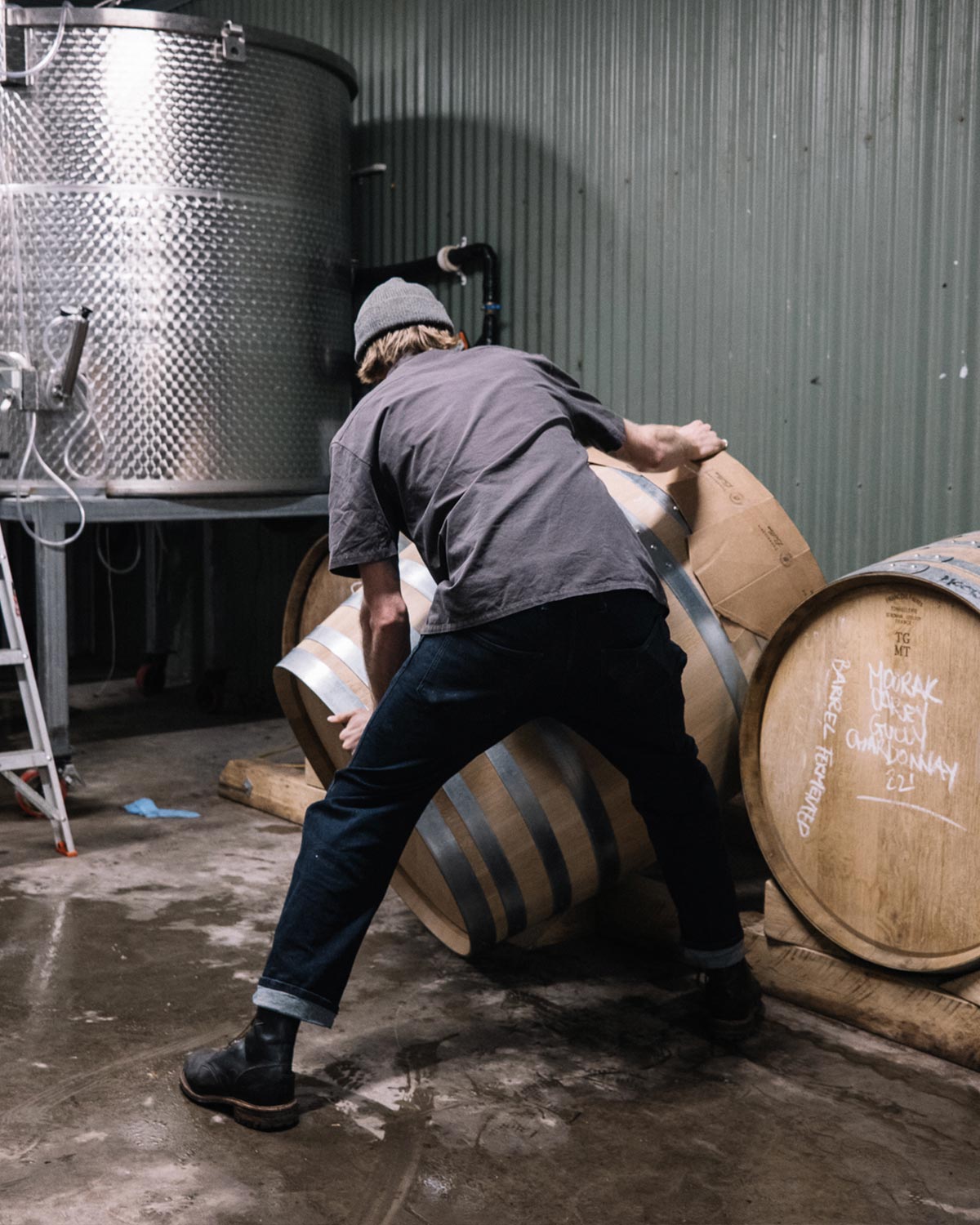Winemaking — Pinot Noir 22
Pt. Two
Oct 2022
From the first of this two part article [READ HERE], the concept was to take the same Mt. Gambier Pinot Noir fruit, and split it - creating two very distinct wines, with distinct varietal elements.
When looking at what constitutes a classic Pinot Noir, our first incarnation could be considered left-field. Challenging the variety and finding an alternative direction to varietal expectations.
A fresh, aromatic and bright wine. Bottled in clear flint, to show the colour vibrancy, lending towards its intention - to drink it, not cellar it. The wine is versatile, chilled or not. The warmer weather this time of year (this side of the world), makes this Pinot ideal, out of the two.
The second wine is a considered and more textural style of Pinot Noir, a classic nod to the premium traditional style of Pinot Noir. The savoury profile and complex structure, it’s moody and intimate.
︎︎︎



The processing of the fruit set the ball rolling in the two directions, and by the differing whole bunch fermentation techniques, added to the very different outcomes.
These differences above make more sense with some detail about the fermentation. 100% whole bunch, when fermented in a closed tank, anaerobically for carbonic maceration, is a widely different outcome to an open top fermentation, as the ferment is able to breathe.
Our first Pinot, fermented whole bunch through carbonic maceration, created the obvious difference of much brighter and confected esters. Whereas for the second, being open top fermented, allowed those esters to omit, leaving a more savoury, deeper outcome.



Another way of creating difference between the two wines was experimenting though racking some of the free run juice to a separate tank. This was added to the first Pinot, giving an extra layer of complexity in the primary fruit. Whereas the remaining bunches, once pressed off, carried more structure and weight for the second Pinot.


The always present variables of time, temperature and the choices of vessels (stainless or oak), allow for even more control over how far we want to go in either direction. The introduction of a new French Oak Puncheon for the resting stages of the second Pinot, emphasised the moody and savoury direction.


Winemaker intervention is a contentious topic for some. Where the opinion that a winemakers influence steers further away from terroir. But the terroir is an elemental value, that we believe can offer multiple directions in style. Maybe it’s gatekeeping and tradition that’s hindered creative development.
Sometimes guiding the terroir through each process, uninterrupted, is in a winemakers best interest. But that’s the beauty of winemaking and being a winemaker. To have direction with creation, winemaking as an art form or engineering - to find a form and express varieties in multiple and unique ways.
The first Pinot Noir of the split, will be available soon in November’s Spring release, and look forward to sharing the second in the new year.

BACK TO
ARTICLES
︎︎︎
Jordan Hein and the Moorak Wines community acknowledges and pays respect to the past,
present and future Traditional Custodians and Elders of
this nation. The aim is to support and develop the continuation of cultural, spiritual and educational practices of Aboriginal and Torres Strait Islander peoples.
Always was and always will be, Aboriginal Land.
Always was and always will be, Aboriginal Land.
